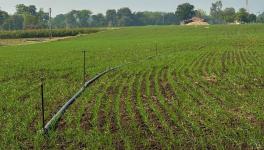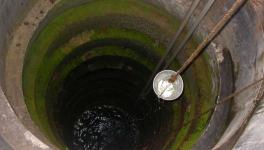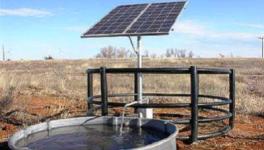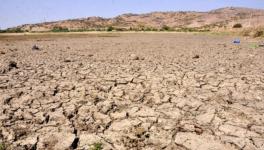Ganga Basin’s Long-term Groundwater Storage Declining, Reveals Study
Representational use only.Image Courtesy: Wikimedia Commons
According to new research published in the journal Nature Scientific Reports, groundwater storage levels have been declining by 2.6 centimetres per year in the Ganga Basin in India. The research is an international collaborative study involving scientists from IIT (Indian Institute of Technology) Roorkee, IIT Bombay, University of Bergen, Norway, and CSIRO, Australia.
The estimates say that the groundwater storage decline is more prominent in Rajasthan, Haryana and Delhi, with approximately 14 centimetres, 7.5 centimetres and 7.2 centimetres per year, respectively.
The team of researchers used multiple approaches to reach the conclusion. They used three different methods to study the long-term decline in groundwater storage in the Ganga Basin in six Indian states.
First, the team of researchers collected data on groundwater levels from the Central Groundwater Board for the period 1996 to 2017. Analysis of this data revealed that the average groundwater level was declining at the rate of 2.6 centimetres per year during the study period. West and southwest areas in the Ganga Basin in India, which include agriculture-intensive areas and urban areas, saw the highest decline, the study showed.
As the second method, the team of researchers considered the data obtained from the GRACE (Gravity Recovery and Climate Experiment) satellites. The GRACE satellites were launched in the year 2002 and they assess the water reservoirs of Earth in land, ice and ocean. The GRACE data analysis showed that during the study period the average decline in groundwater storage was 1.7 centimetres per year.
In the last method, the team resorted to a modelling study involving groundwater dynamics and storage changes. Here, the team calculated the volume of water entering and leaving the aquifer storage. An aquifer is a rock body and sediment that holds groundwater. This analysis suggested that the storage loss stood at 3.2 centimetres per year.
Indu J, an associate professor at the IIT Bombay and a co-author of the study, in her statement to DTE said, “The Ganga basin is noted for many factors, one of which is the groundwater decline.” Supporting the three-line methodological approach taken in the study, she remarked that previous studies had used either modelling or satellite data. Applying only one approach involves many uncertainties, as each has its pros and cons. Hence, they used a combination of methods to reach a conclusion. “In all three analyses, we got the same answer: groundwater in the Ganga basin is declining,” Indu J commented in the same statement.
Abhijit Mukherjee, a professor at IIT Kharagpur, who was not among the study's authors, agreed that his team also arrived at similar conclusions. Delhi and Haryana have the highest abstraction of groundwater, and hence the steep decline could be observed. According to Mukherjee, Rajasthan has been showing some improvement in groundwater levels in the recent past. The state’s groundwater contributes to 90% of drinking water and 60% of irrigation.
However, the Central Groundwater Board Yearbook said that the groundwater level in the year 2021-22 rose in comparison to 2011-2020. Notably, the board monitors groundwater levels four times a year.
It is important to mention here that the Brahmaputra basin has shown more groundwater depletion in recent times than the Ganga basin. In a study by Abhijit Mukherjee and his colleague in 2019, it was revealed that groundwater depletion in Assam, which is in the Brahmaputra basin, was greater than 5 cubic kilometres per year.
Get the latest reports & analysis with people's perspective on Protests, movements & deep analytical videos, discussions of the current affairs in your Telegram app. Subscribe to NewsClick's Telegram channel & get Real-Time updates on stories, as they get published on our website.






















